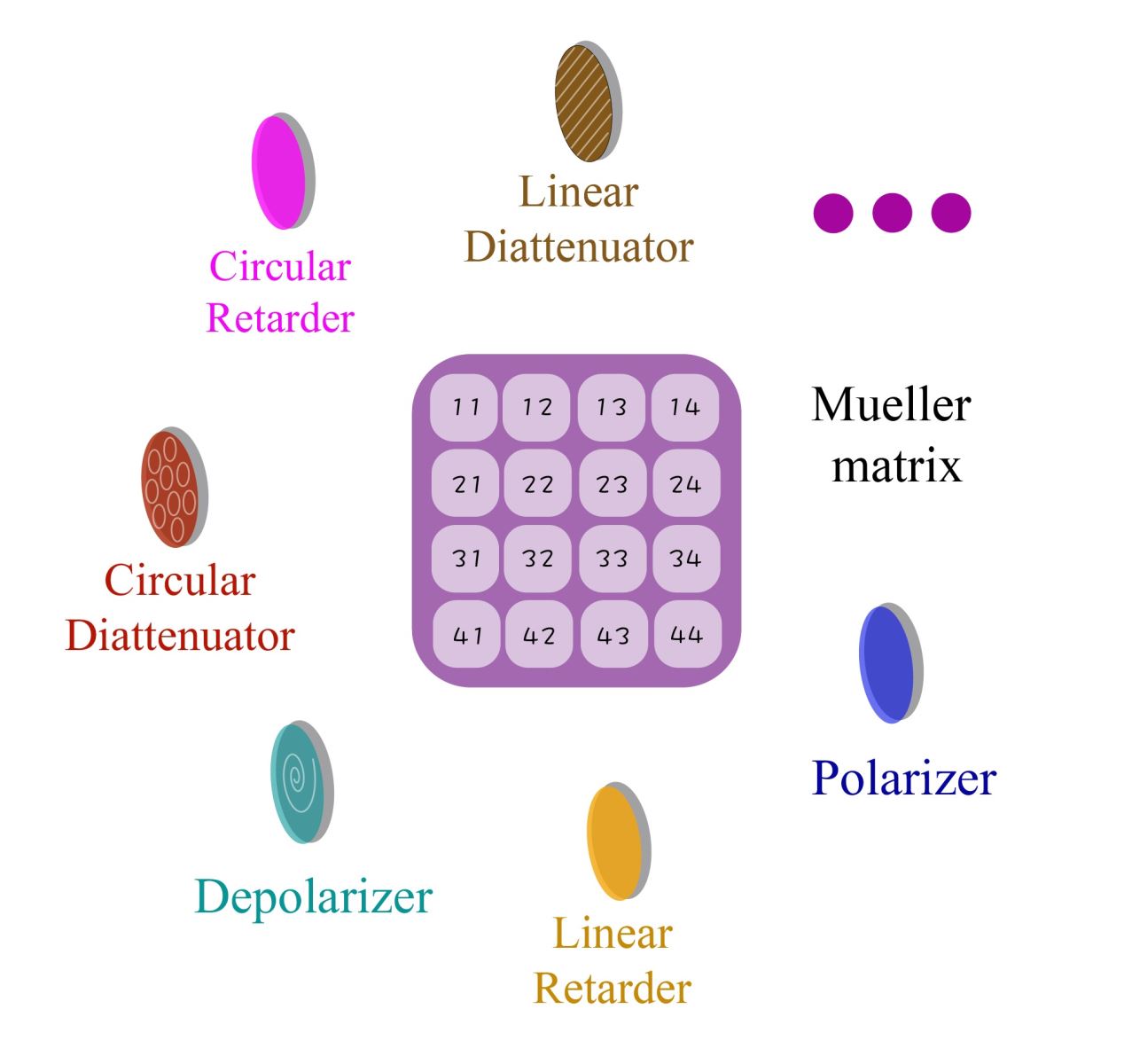 Vectorial metric image of biomedical sample. Credit: Courtesy of Chao He, University of Oxford, Department of Engineering Science, and Honghui He, Guangdong Engineering Center of Polarization Imaging and Sensing Technology, Tsinghua Shenzhen International Graduate School, Tsinghua University
Vectorial metric image of biomedical sample. Credit: Courtesy of Chao He, University of Oxford, Department of Engineering Science, and Honghui He, Guangdong Engineering Center of Polarization Imaging and Sensing Technology, Tsinghua Shenzhen International Graduate School, Tsinghua University
Vectorial properties of light beams and illuminated objects have long been a subject of scientific exploration, exploited in a wide range of technological applications—from biomedical optics to multiphoton lithography. Such properties can be described using either a Jones matrix or a Mueller matrix (MM). While the Jones matrix is typically used for dealing with fully polarized light interference, the MM contains 16 elements that can comprehensively represent the polarization characteristics or vectorial properties of a given object.
Although the MM provides abundant information, the elements are not well-defined. They must be unpacked or “decomposed” to extract the specific polarization parameters. Current research directions in MM decomposition aim to extract meaningful metrics that can provide useful vectorial information for related applications, such as exotic material characterization or precise cancer boundary detection.
An international team of researchers recently collaborated to develop a new framework for describing a class of vectorial metrics that can be extracted from the MM. As reported in Advanced Photonics, the newly demonstrated framework establishes a universal metric, derived from subsets of the MM elements. This is used to calculate different vectorial metrics that represent different physical properties of the sampled target object.

Mueller matrix and its encoded vectorial information. The vectorial metrics can be used to access the specific vectorial information within the matrix. Image credit: doi 10.1117/1.AP.4.2.026001.
Intuitively speaking, the framework is like a cabinet with drawers, where each drawer offers a different metric, available to benefit a variety of applications. All the elements inside all the drawers are all the different combinations of Mueller matrix elements. Through the framework, the metrics become available to serve a variety of functions. For instance, they can reveal the spin Hall effect of light, infer microscopic structure within laser-written photonic waveguides, and conduct rapid pathological diagnosis through analysis of healthy and cancerous tissue.
Aside from those applications in which the metrics mainly reveal information about the target, the new framework also introduces other possible roles for the metrics. Corresponding author Chao He, Associate Member of Faculty at Oxford University’s Department of Engineering Science, offers an example of a new role: “By optimizing the value of a specific metric, passive polarization aberration compensation can be achieved. In our demonstration, we use the vectorial metric value as an indicator to model a compensation in optical design that can eliminate the polarization distortion created by the intrinsic birefringence of the GRIN lens.” In addition to potential roles for the formal symmetry/asymmetry metrics, He and his co-authors suggest prospects for exploring new metrics.
This work provides intriguing insights into different uses of vectorial metrics. Vectorial metrics and their roles present a vast research area to be explored, with a broad horizon of potential future applications.
Read the open access article by Chao He, Jintao Chang, Patrick S. Salter, et al., "Revealing complex optical phenomena through vectorial metrics," Adv. Photonics 4(2), 026001 (2022), doi 10.1117/1.AP.4.2.026001







